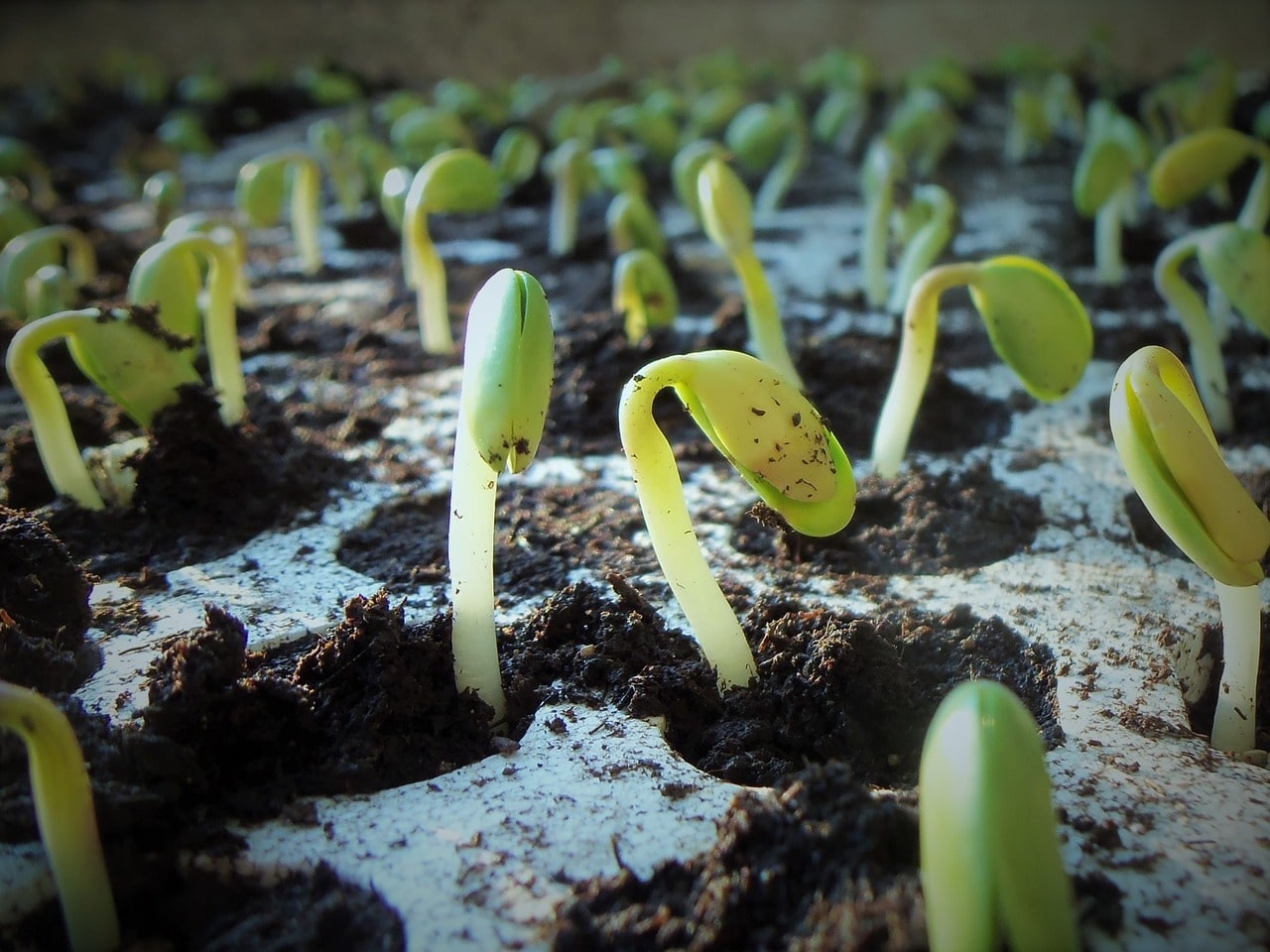Last week I wrote my blog about starting seeds indoors. This week I’ll mention some of the most common questions I get about starting seeds indoors.
Why are my seedlings so long and floppy?
This is a condition called etiolation. This is caused by inadequate light. The only way to fix this is to give your seedlings more direct light.
Your seed trays should always be in front of the brightest window you’ve got. If you’re using artificial light then these work best in combination with the best window you’ve got. If you’re using artificial light alone, the recommended height for fluorescent light is just a few inches above the seed tray, raising the fixture as the plants grow. The lights should be left on 16 hours a day. As always, light fixtures can vary, so follow the directions that come with yours.
Should I start my seeds indoors or out?
The back of the seed package is your best source of information. Many vegetable seeds should be direct-sowed in the garden–all root crops (radishes, beets, turnips, carrots, etc.), most fast-growing vegetable seeds (peas, beans, cucumbers, squash, melons, etc.), some long-season annuals flowers (like impatiens) and some perennial flowers.
How long before my seeds come up?
Consult the back of the seed package. The package will tell you how long it takes for the seeds to germinate. As a rule of thumb, peppers and eggplants take anywhere from 10 to 25 days to sprout; tomatoes around 7 to 10 days; basil and zinnias 5 to 10 days. Green beans can sprout in as little as 3 to 5 days.
When will I get my first cucumber/tomato/watermelon?
Again the seed packet is your best source of information. If it says 60 days then you can expect to wait at least two months. Keep in mind that what Mother Nature does will have some effect on that—lots of cloudy or drizzly days may delay things a bit.
Why did all my seedlings fall over and die?
This is a condition known as damping off. Damping off is a fungus that attacks new seedlings. There is no treatment once you get it, but you can easily prevent it by starting your seedlings in a sterile seed-starting soil or little peat pellets; making sure your trays have good air circulation (always remove the clear plastic greenhouse lids once the seeds have come up); making sure your trays are getting adequate light; and thinning seedlings properly (again, the back of the seed packet will tell you).
When can I transplant my seedlings outside?
Check the back of your seed package. As a general rule, most of our summer veggies can be transplanted outside the first week in May. But it all depends on what the weather is at that time. Remember, last year, we had snow after mid-April and a hard freeze the end of April. Last year, I waited a few days after May 1 just to be safe. You can certainly set your seed trays outside whenever the weather is above 60 degrees if you like. Just remember to “inch” your seedlings into full sun so you don’t sunburn them.
We have a great selection of seeds in and now is a perfect time to get long-season veggies (like tomatoes, etc.) and perennial flowers started.


I am not able to do an outdoor garden since I live in an apartment. Every year I have tried to plant tomato plants in a pot, but so far have had no success. Please provide suggestions that can be used so I can have fresh vine ripened tomatoes.
I do a number of veggies in containers, since I have to find suitable sunny spots. The first requirement is at least six or more hours of direct sunlight. If you don’t get that much sun, then I’m afraid you won’t be able to grow a productive tomato. (If not, then you could grow some nice leafy greens–like lettuce, spinach, kale or Swiss chard, though.)
Choose a good-sized container (I always go at least 16″ in diameter or more) with a drainage hole. Use potting soil to fill the container-not garden soil. Grow any variety you want, you don’t have to use a “bush” or “Patio” type–grow any variety, just know you’ll have to provide a tomato cage or trellis or something for support. Get a good fertilizer and use it according to the label directions. I use Tomato-tone and apply it around the inside edge of the pot. Be sure to water whenever it’s dry at least a whole finger length down.
I’m doing a seminar on veggie gardening this Saturday at 10:00 and I will be doing a segment on gardening in containers. If you have any more questions, you can give me a call.